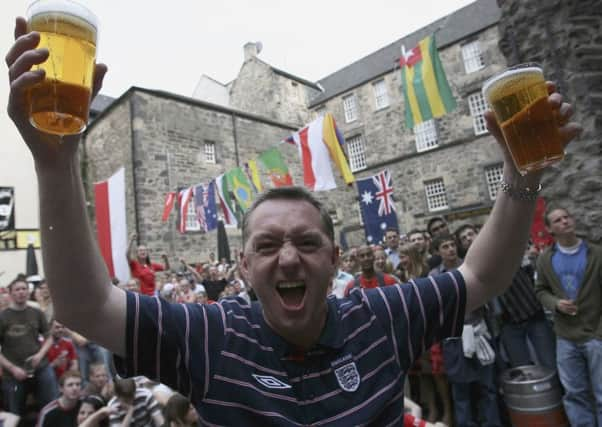Do Scots really drink more than the English?


The Scottish Health Survey, conducted by ScotCen on behalf of the Scottish Government, has been measuring alcohol consumption for several years.
What may surprise some is that overall alcohol consumption is similar: in both Scotland and England, more than three in five adults drink at levels that are within official guidelines – no more than 21 units a week for men or 14 for women – and over the past decade, alcohol consumption has fallen.
Advertisement
Hide AdAdvertisement
Hide AdSo far, so similar. But where the two nations diverge is on the proportion who don’t drink at all. Just under one in eight (18 per cent) of adults in England were teetotal, largely similar to the 16 per cent in Scotland, but there is a significant difference among the under-25s. Around one in four (24 per cent) under-25s in England said they don’t drink alcohol, significantly higher than the proportion of non-drinkers in Scotland (16 per cent).
In England, different ethnic profiles, the price of alcohol and rebellion against the “binge Britain” image of the preceding generation have been cited as explanations, but it’s not clear why this is not the case in Scotland.
Despite being the group with the highest proportion of non-drinkers, younger people in Scotland and England were most likely to have drunk at “binge” levels in the week preceding the survey: more than eight units on a single occasion for men, more than six for women.
But they didn’t drink as often as the more moderate middle-aged. In fact, men aged 45-74 in Scotland and England and women between the ages of 45 and 54 in Scotland, and 45 and 64 in England were most likely to consume more alcohol than was recommended over the course of a week. For a man, the recommendations are equivalent to around ten pints of normal strength beer, or under two and a half bottles of wine. For a woman the threshold is lower – the equivalent of around one and half bottles of wine or seven pints of beer.
Of course, this is the time of year when many people’s normal drinking routines are disrupted.
But in Scotland and England, it may be worth thinking about how much and how often we drink in 2016.
Elizabeth Fuller is a research director at NatCen Social Research. NatCen and its sister organisation ScotCen conduct the Health Survey for England and the Scottish Health Survey.